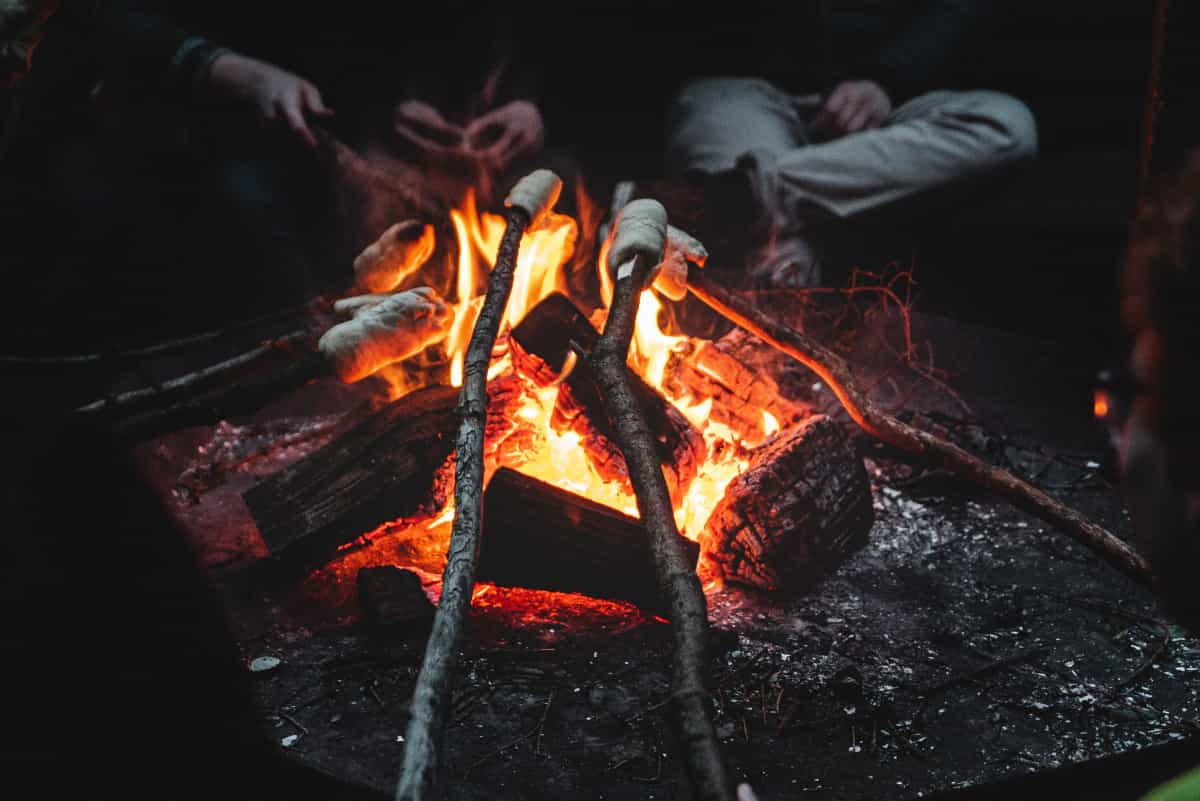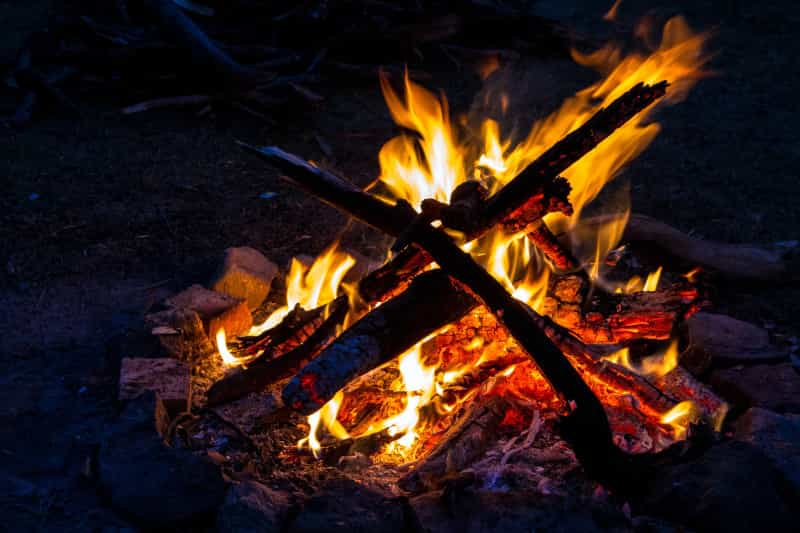How to build a campfire
For many people, a campfire is an essential part of an outdoor break, whether you need to keep warm while on your camping pitch or just want to toast some marshmallows on a glamping holiday.
Before you get started, it’s important to make sure that you’re booking a place that doesn’t have a campfire ban. The easiest way to do this is to use our list of campsites that allow campfires – but do bear in mind that very hot or dry weather may result in a temporary fire ban even at these sites.
See all Pitchup campsites that allow campfires
After that, the big question is: how do you actually build a campfire? Follow our simple step-by-step campfire method and you’ll be warming your hands over the flames in no time…

Step 1: choose where to build your campfire
This decision may be made for you, as some campsites have a designated campfire or firepit area to ensure the safety of all guests.
If you’re choosing your own spot, look for a position on flat ground and at least three metres away from trees, bushes, tents and anything else that could catch fire. It's very important to remember that you should NEVER light a fire on grass, so choose a base of bare earth for your fire or light it in a suitable container like a firepit.
Step 2: gather your campfire materials
What you’ll need to build a campfire:
-
Stones or rocks
-
Tinder (small bits of dry wood and leaves that will burn quickly)
-
Kindling (larger dry twigs or small branches)
-
Fuel wood (sizeable branches or bags of firewood – these can often be bought at campsites)
-
Firelighters (optional)
-
Water (as a safety precaution)
Step 3: build your campfire
There are several methods to choose from, but here we’re going to stick to the easiest way to build a campfire: the tipi technique.
-
First, construct a ring of stones or rocks to form the outer edge of your campfire.
-
Next, create a central bundle of tinder in the middle of your ring of rocks.
-
Build a ‘tipi’ or pyramid of kindling over the top of the tinder, making sure you leave some space between the twigs to allow some air to get in.
-
Finish your tipi with a final layer of fuel wood propped up in a similar pyramid shape.

Step 4: light your campfire
Use a match or long-handled gas lighter to set your tinder alight – don’t try a cigarette lighter, which is awkward to angle into the middle of the structure. You can also add a small amount of firelighter (the sort of thing you might use for a barbecue) to speed up the process if you like. Either way, the flames should travel up from the tinder and gradually spread to the rest of your tipi of wood.
Step 5: keep the fire burning
Once your fire is crackling away, it’s time to relax and enjoy it. You’ll need to keep feeding it in order to keep it alive though, so add more kindling and fuel wood from time to time, working your way from the smaller branches up to bigger pieces of wood. Don’t add too much at any one time or you'll risk either smothering the flames or having your fire burn out of control.
Step 6: extinguish your campfire
It can take about 20 minutes to extinguish a campfire completely, so don’t leave it until the moment you want to leave or go to bed.
The safest way to put out a campfire is to sprinkle water on the flames, then use a long stick to stir the ashes to dampen them all and unearth any glowing embers that you may need to douse further. Avoid the temptation to pour a large amount of water on your fire, as that will just flood the area and create lots of steam.
You may need to sprinkle more water and keep stirring for a while to make sure the fire is completely out. The area is only cool enough to leave when you can hold your hand close to it and feel no heat.
Step 7: dispose of your ashes
‘Leave no trace’ should be the motto of all campers – and that’s particularly true of campfire remains. Whether you’re at a campsite’s firepit area or out in open countryside, you should gather up your ashes and dispose of them responsibly, either in the bin or by scattering them in a suitable place.
Once you’ve done that, put your rocks or stones back where you found them, and generally do your best to return your campfire area to the state you found it in. All of this can be done in the morning, once your ashes are completely cold and you have some daylight to work with.
Campfire FAQs
Do all campsites allow campfires?
It’s important to note that some campsites do not allow campfires, for safety reasons. To make sure you’re booking one that does, look at Pitchup’s list of campsites that allow campfires, then filter by location to find your place to stay.
How do I keep a campfire burning?
To keep your campfire going, make sure you have plenty of kindling and fuel wood, and add it gradually so that your flames never get too low or too high.
How can I build a campfire in the rain?
Keep your wood as dry as possible (perhaps storing it in your tent or car boot until you need it) and then work quickly to get it lit, using firelighters to help the process if needed. Remember that moisture also comes from below, so wipe out your firepit or choose a dry patch of ground before you start.
Can you cook on a campfire?
Yes, you can cook delicious meals on a campfire – we’ve got a guide to campfire cookery to help you along. For a quick and easy meal, make a stew or chilli at home and reheat it on your campfire for an added smoky flavour.